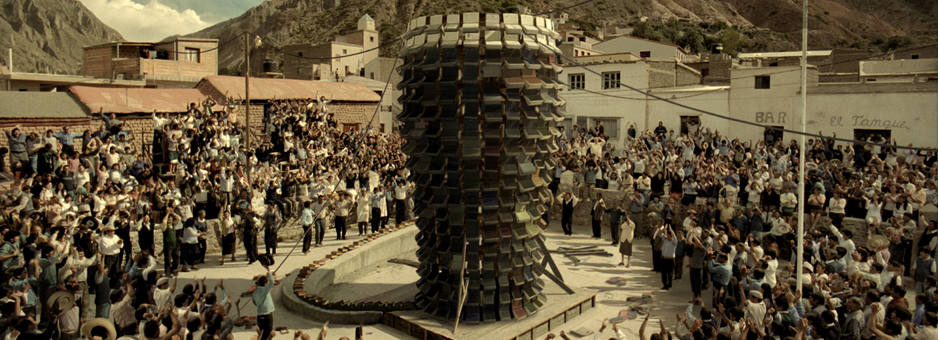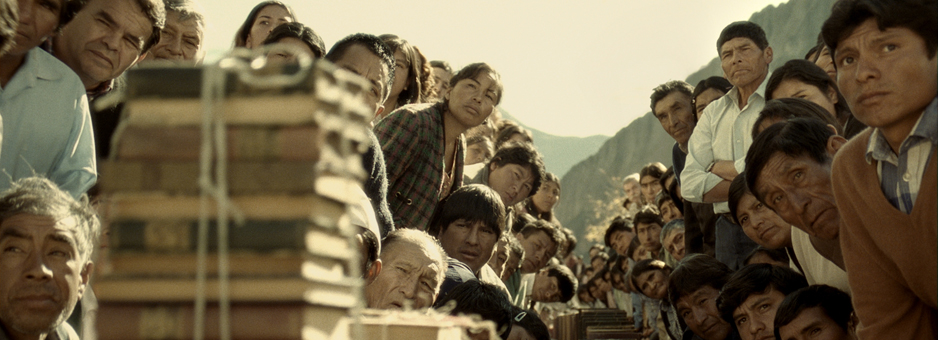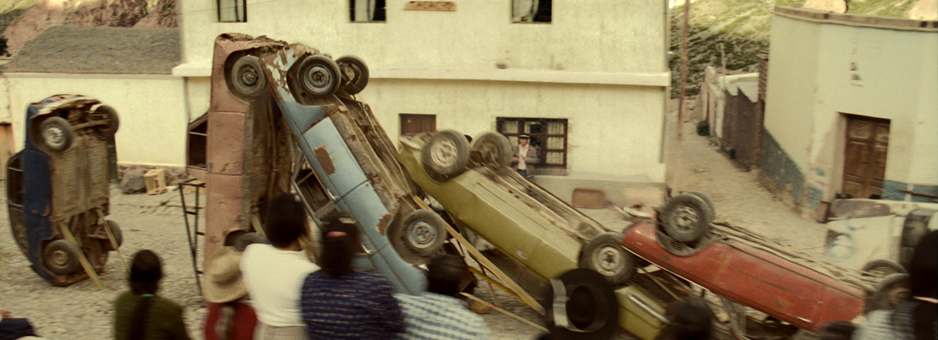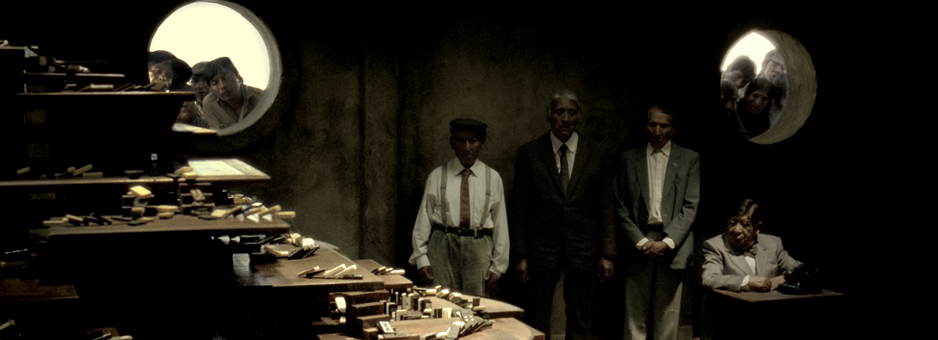Baselight Helps The Mill 'Finish' a Pint of Guinness
Award-Winning Colourist Paul Harrison Grades "Tipping Point" Commercial
Click the link below to view the commercial on Beam.TV.
The Mill has earned an international reputation for its ability to create the most incredible illusions with seamless precision, and its latest work for Guinness and AMV BBDO fits squarely within that tradition. The 90-second commercial, in which the residents of an Argentine village pull off a domino stunt of stupendous proportions, is an ingenious amalgam of live action, CG and visual effects.
The colour grading is flawless. Although the commercial was shot with five cameras over the course of six very long days, colourist Paul Harrison, performing the work on Baselight, makes it appear as if it had all been shot in real time. Pushing Baselight to the max, Harrison breathed life into marginal shots, effortlessly accommodated visual effects updates and facilitated the delivery of versions for cinema and international television distribution.
Tipping Point is the latest in a series of high production value commercials for Guinness built around reveals of a foaming pint glass. (An earlier entry in the campaign, Evolution, was a Grand Prix winner at Cannes.) Here, residents of a rustic town watch in breathless anticipation as a man tips a domino and begins a chain reaction that includes not only many more tumbling dominos, but also carefully arranged lines of cigarette packs, bookcases, furniture and tires. The tumbling action continues through narrow streets gathering momentum and involving an ever more astonishing assemblage of objects large and small—at one point a half dozen old cars, set upright, fall into one another before setting a line of straw bales ablaze. The tipping culminates in the town square where a tower of books flip open their pages to form an immense, 3-dimensional collage representing a glass of Guinness.
The Mill's visual effects team applied its artistic touch to nearly every scene, compositing in extra villagers and animals, applying graffiti and texture to walls, and blending in dust and other atmospheric effects to enhance the richness and cinematic quality of the imagery. The giant pint of Guinness is a wholly digital creation conjured up by the facility's 3D team with Houdini software.
Colour grading played an essential role in creating the commercial's moody atmosphere and odd sense of realism. The imagery has a slightly washed out, golden cast and is roughly textured as if it were a decades old documentary retrieved from a dusty film vault.
Once the commercial had been edited, The Mill scanned the select 35mm negative elements to 2K data for grading on Baselight. "We wanted to give it a distinctive look and make it look photographic," notes Harrison, a 2-time winner of the BTA Craft Award for Best Colourist. "I especially liked the craggy old faces and tried to get as much texture out of them as possible."
Harrison completed the grade under the supervision of BBDO's creative team and the director, MJZ's Nicolai Fuglsig, with cinematographer Ellen Kuras sitting in via a live feed from The Mill's New York office.
Before Harrison could finalize the look, he first had to establish consistency among source material captured with different cameras, stocks, in different locations and at different times, under greatly varying lighting conditions.
One scene, showing a collapsing pyramid of mattresses, had been shot at the end of a production day. "The light was pretty much gone," recalls Harrison. "It was almost like doing a night-for-day shot."
In resurrecting the shot, Harrison was aided by a feature of Baselight that enabled him to define multiple, complex mattes within a single frame and apply individual colour treatments to each simultaneously. "I was able to draw mattes of certain areas and then soft matte them together," he explains. "I could take down the side of a building, without affecting the front, and give the mattresses a different treatment. I achieved a good balance and it was all done in one go."
"I used 16 layers on some of those shots. It was a bit of a jigsaw and amazing to compare how it started out with how it ended up," Harrison adds. "It would have been a struggle to do it with a traditional telecine. Baselight was the only way."
Even as Harrison was working on the grade, visual effects production was ongoing elsewhere in the facility. As a result, shots were being constantly updated. "I was grading from the same data as the Flame guys and there was a lot of chopping and changing," Harrison says. "If new effects were added to a scene that I had already graded, we would simply put it on Baselight and check to make sure it was all working nicely and tweak things that needed tweaking. Baselight was great for that."
Baselight also made the process of preparing deliverables more efficient. After Harrison finished grading the 90-second cinema version, his work was essentially done as elements from it could be repurposed for other versions without reprocessing or re-grading. Only shots that did not appear in the original version required grading in Baselight.
The Mill has been using Baselight for two years to grade both commercials and television programming. During that time, the facility's colourists, including Harrison, and its engineers have been in steady communication with FilmLight's development and support staff. Their input has played a crucial role in the on-going development of Baselight, in particular in improving its usefulness as a platform for grading commercials.
"FilmLight changed the way grading tools work and implemented features that we use in a day to day environment," Harrison said. "It's made life easier for us. I have been doing things in Baselight that I can't do anywhere else."







